
User Guide - Common Motifs in Mesh Design
Common Motifs in Mesh Design
This section deals with themes that occur frequently when laying out a gAlan mesh and describes how to build some useful subsystems of interacting components. Eventually gAlan will support proper nesting of worksheets, which will enable abstraction of these ideas into a library of meshes, each of which can be inserted into another (like subroutines in a programming language versus cut-and-paste programming).
Multiple-voice Drum Machine
This topic is covered by the tutorial.
Multiplexing many inputs
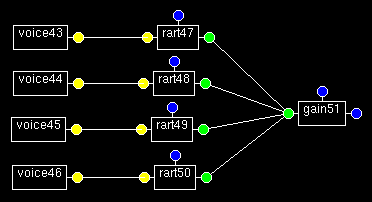
This image illustrates mixing many audio signals into a single audio signal using a Gain component with its internal gain factor set to 1.0.
Building an LFO (Low-frequency Oscillator)
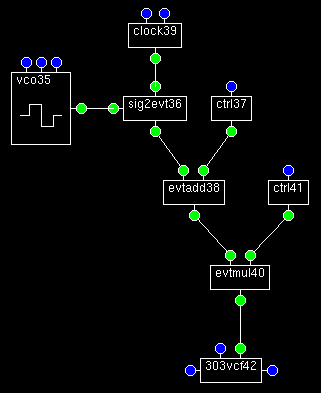
This image illustrates an LFO attached to the cutoff parameter of a low-pass filter. Note how an evtadd plugin is used to shift the sine-wave from being centred about zero to being centred about one, and then an evtmul plugin is used to scale the whole thing to the depth of sweep that is desired (anywhere between, say, 250 and 3000 are useful factors). Note that the rate of the clock plugin determines how often the cutoff frequency of the filter is updated - every time the clock sends an event to the sig2evt plugin, the oscillator is read and the result sent down the pipeline to the filter.
Building a tuned instrument from a sample
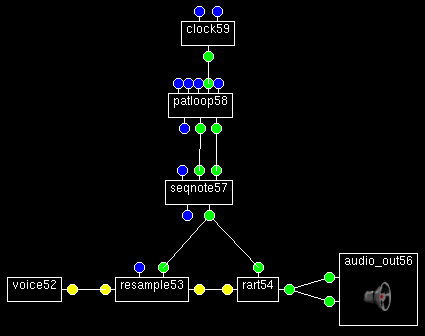
This image illustrates a Note Sequencer controlling the pitch and triggering of a Sampled Voice. Note that the right-hand output connector from the seqnote is used, because the resample plugin expects a MIDI note. Sending a frequency to the resample plugin is not possible - it expects either a resampling factor, or a MIDI note (where it assumes that its input signal is tuned to middle C, C4, note 48).
Building an instrument from an oscillator
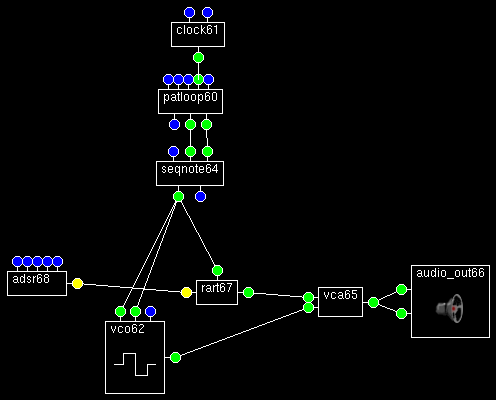
This image illustrates a Note Sequencer controlling the pitch and triggering of a simple tone shaped by an ADSR volume envelope. Notice that the output from the seqnote is used in two ways: twice as a trigger (resetting the phase on the oscillator and triggering the ADSR envelope) and once specifying the frequency of the tone to generate.
A more complicated oscillator-based instrument
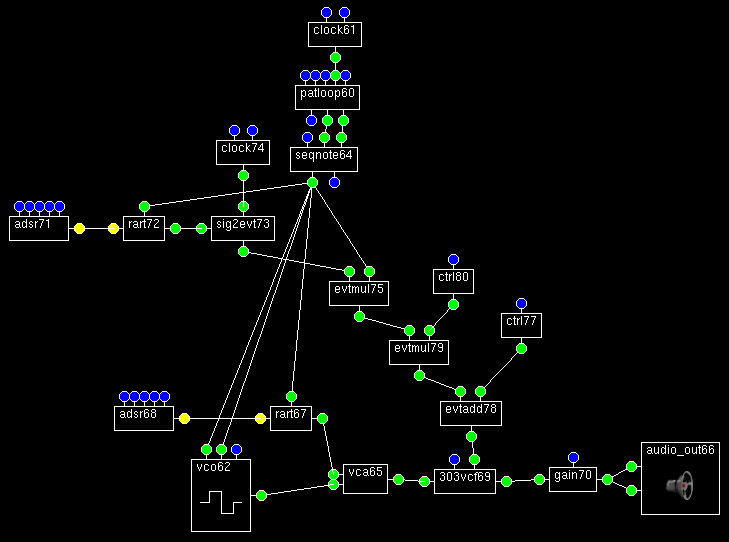
Here we have taken the simple oscillator instrument from above, and have added in an envelope-controlled filter. The signal from the filter envelope is sampled periodically by a sig2evt converter, and cascades through a multiplication by the frequency of the note itself - this makes the filter cutoff frequency move proportional to the frequency of the note - followed by a further multiplication (so that the filter frequency is some constant factor larger than the base note frequency) and an add, to make sure that the cutoff frequency doesn't descend below a fixed floor value.
This is, in essence, an integration of the simple instruments above with the LFO motif detailed further up.